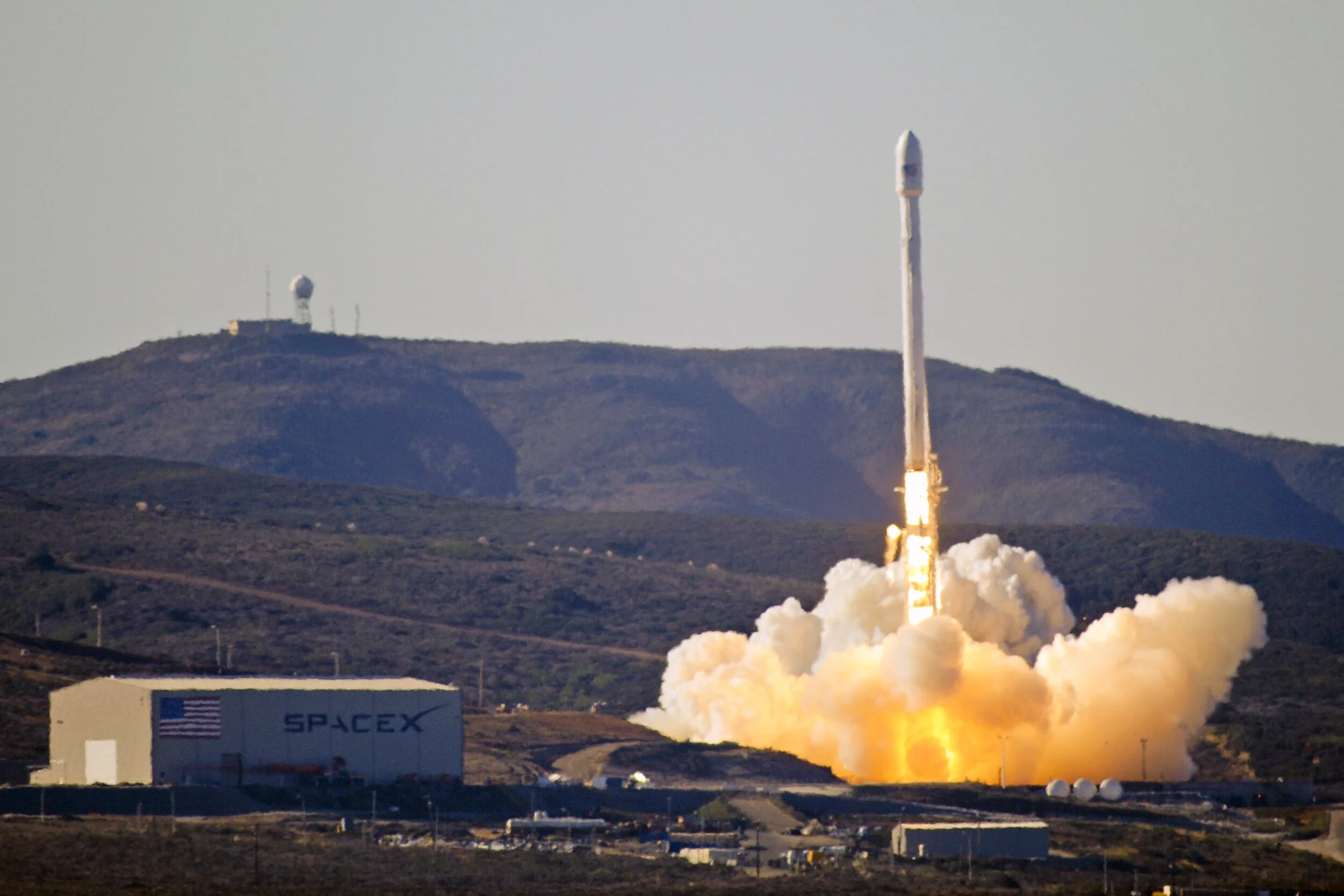Elon Musk has been one of the leading names of technology and innovation in the 21st century. His entrepreneurial career began in the early 2000’s when he founded x.com (1). Musk’s company was then sold to PayPal, of which he later became the CEO. PayPal was then sold to eBay and, as the company’s largest shareholder, Musk walked away with $165 million dollars (1). He used this money to start companies and projects such as Tesla, The Boring Company, the hyperloop, and SpaceX. All of these entities have the ambitious goal of revolutionizing modern day transportation. Recently, SpaceX has been in the news for its greatest achievement to date: a successful manned launch into outer space using the world’s first reusable rocket.
Consolidated and Substitutable: The U.S. Meat Processing Industry
After charging a couple of poultry companies with price-fixing, the U.S. Justice Department has recently opened a formal probe into the beef processing industry. This follows a previous statement from May in which politicians requested that the Justice Department investigate beef prices’ recent surge. The concern is that the meatpacking industry, which was recently deemed “critical infrastructure” due to COVID-19, is suppressing prices paid for cattle by purchasing fewer – devaluing cattle operations and increasing meat prices paid by consumers. While the traditional U.S. meat industry stumbles, the fake meat industry is seeing a growth in exposure and sales. Ground-meat prices doubled between March and May, leading to a 264% spike ($25.7 million increase) in grocery store sales of alternative-meat products during a nine-week period ending May 2nd. This article explores the current U.S. meat industry, the benefits and drawbacks of a consolidated meat market, and whether a fragmented meat market may bolster U.S. agricultural sustainability.
The Expansion of the Federal Reserve over History and into the COVID-19 Pandemic
From the beginning of the coronavirus outbreak in the United States, the Federal Reserve (The Fed) has served as a key and central actor in the government’s economic response. The Fed quickly employed its arsenal of monetary policy initiatives to stimulate the rapidly slowing economy caused by consumers’ inability to leave their homes and spend money on goods. These aggressive responses aim to provide economic relief to sustain the economy until the impact of coronavirus subsides. Recently, the Federal Reserve announced new policies that dramatically expand its role in the national economy. This credit expansion calls into question the scope and purpose of the Federal Reserve as it continues to stretch beyond its initially limited goals. Looking into the future after the decline of COVID-19 underscores the highly alarming potential of the Fed’s newfound influence on businesses of all sizes and the politicization of Federal Reserve appointments.
ESG Investing, A Shortcut to Social Responsibility
Socially responsible investing has been an increasingly popular practice for American individuals and companies. Global climate change has influenced one of the most famous social activist movements in the history of the United States, putting fossil fuel emitting companies under fire as well as their investors. This movement has caused a surge in investment in companies’ environmentally conscious practices. A more popular form of this investment has been termed “ESG” investing, or environment, social and corporate governance. This movement is an attempt to change the perspective on government and corporate investment in the United States. Essentially, this type of investing aims at improving both the images and functions of companies. This happens by spending money on helping fight climate change, improving social capital by ensuring their products and services bring safety and innovation to everyone involved and finally, by having a strong corporate governance that builds innovative culture.
Will Commuting to Work be a Relic of the Past?
The COVID-19 pandemic has many thinking what life will be like when things eventually “go back to normal”. Many are wondering if the mask-wearing trends will continue, while others believe handshakes will be gone with forever. In terms of working remotely, many experts are not counting out the possibility that this may be a sign of new times and the future for some businesses. With the growing costs of rent overhead and the prevalence of computers in the workplace, there is a very real possibility that working from home will be much more common once the pandemic has passed.
COVID-19 Consumption Trends: The Downfall of the Retail Sector
By now everyone has been able to feel the effects of the Coronavirus outbreak, as it has had a dramatic impact on our day-to-day lives. Whether it be who we interact with, where we go, how we travel, or how we eat, our daily routine looks very different than it did only a few months ago. This drastic change in everyday behavior has also completely changed our consumption methods. No longer are we dining out, making trips to the mall, or shopping along our city’s streets. Numerator, a specialist in consumer insights, utilizes what they call an omnipanel to gather accurate consumer intel. The omnipanel collects consumer information from various sectors by collecting electronic receipts from a wide range of individuals. Numerator has been able to use this data to find great intel amongst consumers and how their consumption trends are changing due to Coronavirus. To help give a larger picture, almost 90% of individuals have changed their consumption habits due to Coronavirus (Numerator, 2020). Consequently, many large retail and typical brick-and-mortar stores are struggling to survive. The potential fallout of these stores would completely reshape our consumption methods for years to come.
The Economics Behind Trump’s “Rocket Ship” V Shaped Recovery
“And now we’re opening and we’re opening with a bang” 45th President Donald Trump stated in a June 5th press conference concerning the state of the economy upon state’s reopening, following month long closures due to the covid-19 outbreak. “This is better than a V” he continues, “this is a rocket ship, this is far better than a V” as he draws the shape of a V in the air with his finger. This statement came along with the pleasant surprise of reports revealing the national unemployment rate for the month of May had fallen to 13.3% from April’s 14.7%, a statistic economists worried would take much longer to return to any sort of normalcy. While it is certainly still much higher than February's rate of 3.5% before coronavirus was a household name, the 2.5 million jobs gained is certainly a step in the right direction.
The NASA and SpaceX Launch: Reigniting the Dream of Space
On Saturday May 30th, SpaceX launched the Falcon 9 rocket with the Crew Dragon Spacecraft to the International Space Station (ISS). The project was executed in conjunction with NASA, which provided SpaceX 2.6 billion dollars in funding for the launch (O'Callaghan). The event was seen as a proud moment for Americans across the nation for two reasons. The first being that the United States has fallen behind in the “Space Race” since the last NASA shuttle launch in July of 2011 when theAtlantis shuttle took off from the Kennedy Space Center with supplies for the ISS (Dunbar). The second was the innovations that have been made in the aerospace industry and the exciting work being done at the ISS.
COVID-19 Results in Major Financial Losses for Major Sports Leagues
On March 11th, the National Basketball Association (NBA) made the decision to pause its season indefinitely after Utah Jazz player Rudy Gobert tested positive for COVID-19. After this decision was made, other leagues quickly followed suit, including major NCAA conferences such as the BIG 10, ACC, and SEC, which all made the decision to cancel their conference tournaments immediately despite the fact that some had already begun. Soon after, the NCAA made the decision to cancel the March Madness tournament, which has been held every year since its inception in 1939.
Three Decades Later and NASA’s Newest Space Telescope is Almost Functional
For the past couple of months, newsfeeds have been flooded with articles and information regarding COVID-19, and more recently the nation-wide tension and protests in the U.S. following the death of George Floyd. And yet, one piece of recent news was powerful enough to unify and rally an entire nation despite such bleak times. That piece of news was of course the successful launch and docking of the SpaceX Crew Dragon to the ISS. While this event was impactful enough to break into the stream of other issues being reported on at this time, many other remarkable scientific developments have occurred over the past couple of months and gone unnoticed because of other news stories at the time. Another space related enterprise that has recently reached significant, newsworthy milestones is the James Webb Space Telescope.










